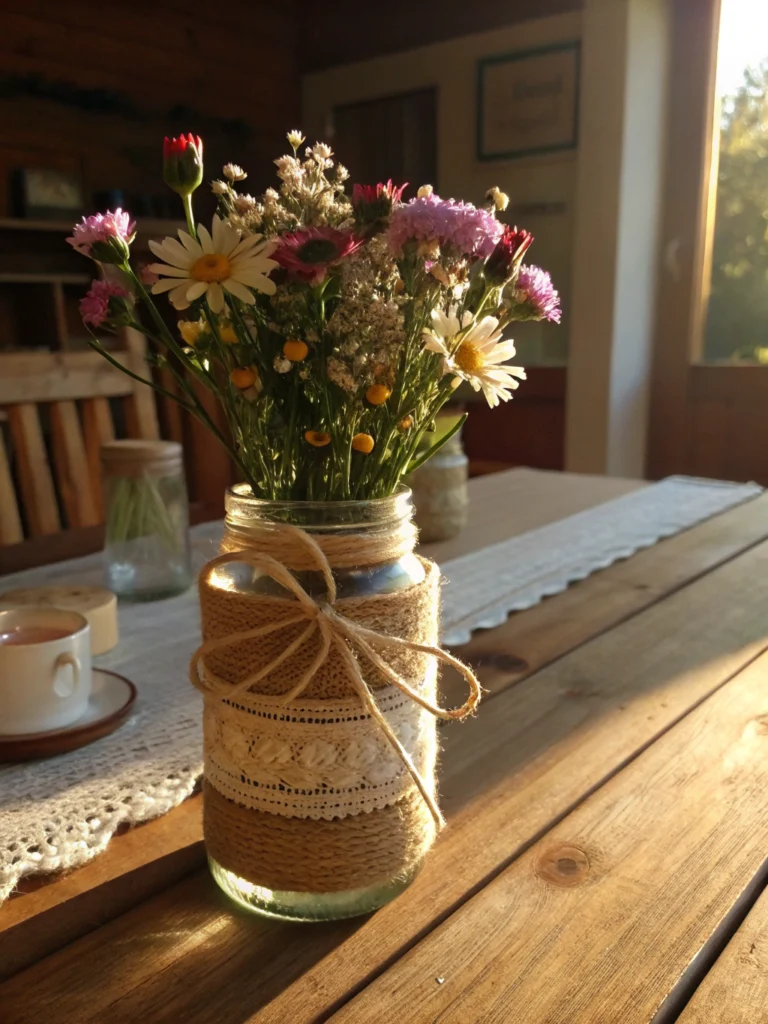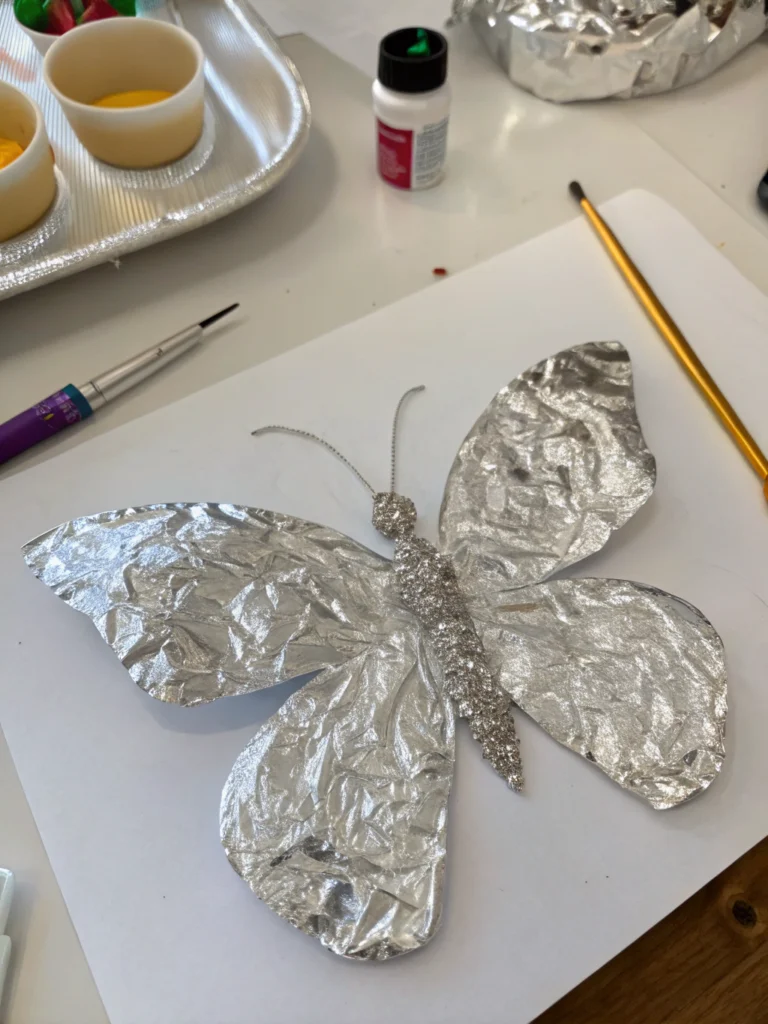Got a pile of “stuff” you can’t quite part with, or maybe you’re just itching for a weekend project that pampers your furry friend without breaking the bank? You’re in the right place! Creating upcycled pet beds is a fantastic way to transform forgotten household items into cozy, stylish havens for your beloved companions. Not only does this approach let you flex your creative muscles, but it’s also wonderfully eco-friendly and budget-conscious. Say goodbye to clutter and hello to a happy pet and a proud DIY moment. We’re diving into seven creative ways you can give old items a new leash on life – as adorable and functional upcycled pet beds!
Table of Contents
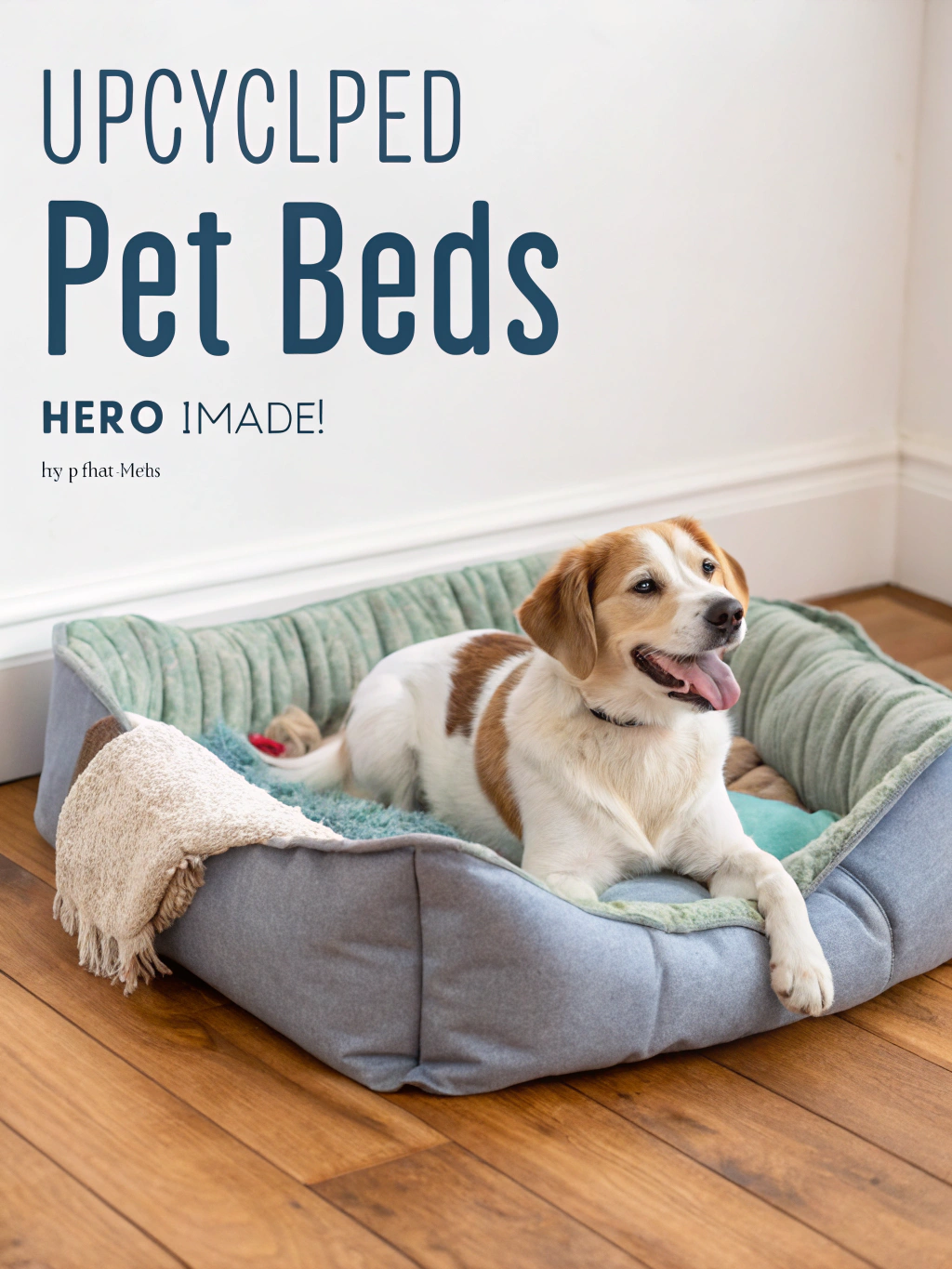
As fellow home-improvement enthusiasts, we know the satisfaction of making something beautiful and useful with our own hands. And when it comes to our pets, they deserve the best, right? Mass-produced pet beds can be expensive and often lack character. But by looking at old furniture, unused containers, or even worn-out clothing with a fresh perspective, you can craft unique upcycled pet beds that perfectly match your home’s style and your pet’s personality. This guide is packed with “Upcycled pet beds DIY, Creative upcycled pet beds ideas, How to make upcycled pet beds” inspiration to get you started.
Why Choose Upcycled Pet Beds? The Paw-sitive Perks!
Before we roll up our sleeves, let’s quickly bark about why upcycled pet beds are such a fantastic choice for both you and your furry family members.
- Eco-Warriors, Unite! In a world increasingly focused on sustainability, upcycling is a brilliant way to reduce waste. Instead of sending old items to the landfill, you’re giving them a brand-new purpose. It’s a small step that makes a big difference to our planet.
- Budget-Friendly Bliss: Let’s be honest, pet accessories can put a dent in your wallet. DIY upcycled pet beds often use materials you already have, or can source very cheaply from thrift stores or yard sales, making it a super cost-effective option.
- Unleash Your Creativity: This is where the fun really begins! You have complete control over the design, materials, colors, and size. Want a shabby chic bed for your poodle or a rustic retreat for your retriever? You can make it happen!
- Purr-fectly Personalized: You know your pet best. You can tailor their new bed to their specific sleeping habits, size, and even their quirks. Does your cat love to hide? An old TV console could be perfect. Does your dog like to stretch out? A long drawer might be ideal.
- Declutter with Purpose: That old suitcase gathering dust in the attic? The drawer from a broken dresser? These items can finally find a new, cherished role in your home, freeing up space and reducing clutter.
- A Bonding Experience: If you have older kids, involving them in creating upcycled pet beds can be a fun family activity. Plus, your pet will surely appreciate the love and effort poured into their new favorite snoozing spot.
So, are you ready to transform trash into treasure and give your pet the comfiest, most stylish bed on the block? Let’s get started!
What You’ll Need: Your Upcycled Pet Beds
While each project will have specific requirements, here’s a general list of tools and materials you’ll often find handy when creating upcycled pet beds. Having these on hand will make your DIY journey smoother.
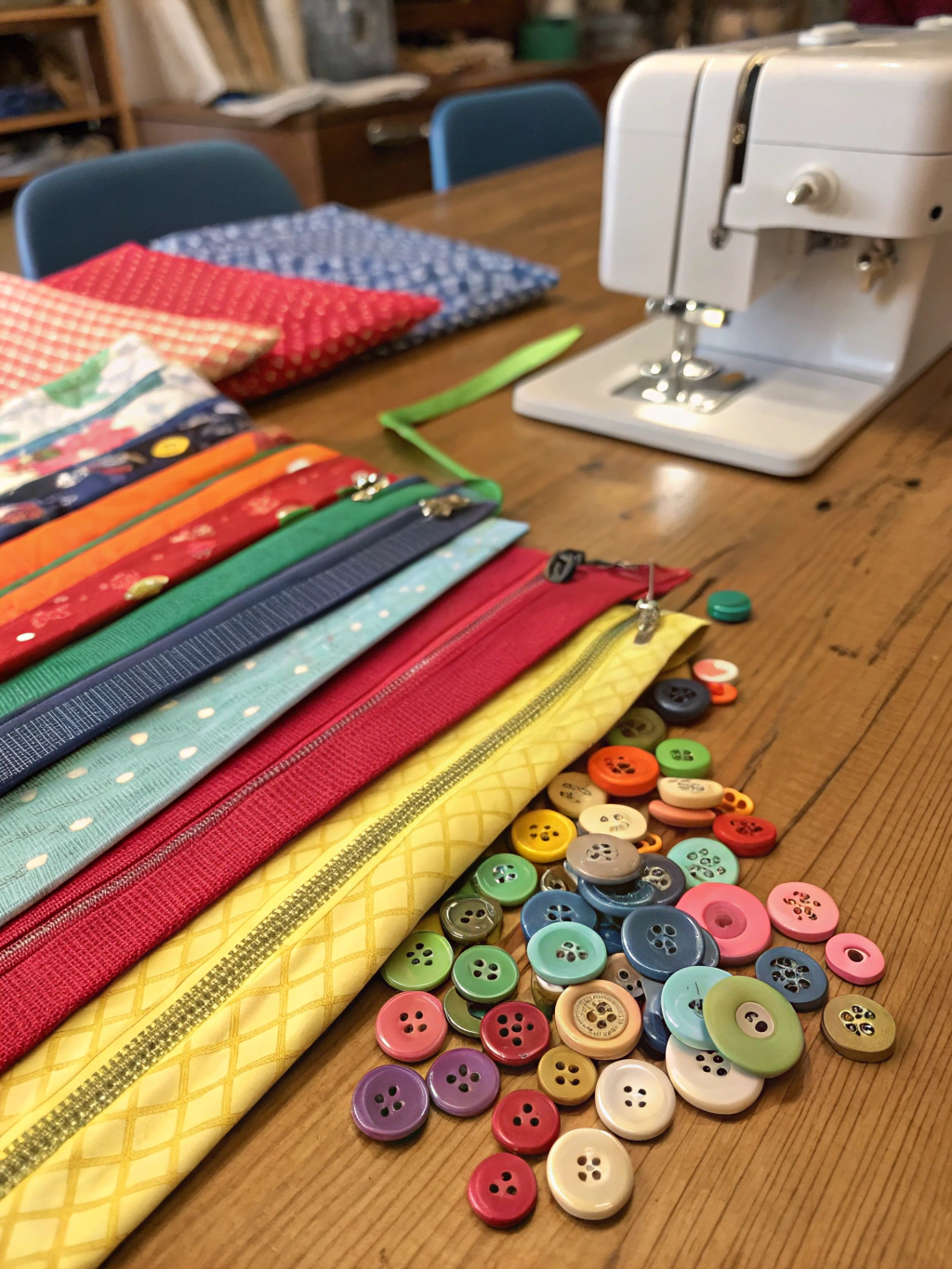
Basic Materials & Supplies:
- Your “To-Be-Upcycled” Item: This is the star of the show! (e.g., old suitcase, drawer, tire, sweater, pallet, crate).
- Cleaning Supplies: Soap, water, rags, sandpaper (various grits), primer.
- Adhesives: Strong craft glue, wood glue, or epoxy (depending on materials).
- Fasteners: Screws, nails, staples (and a staple gun).
- Paints & Finishes: Pet-safe, non-toxic paint, varnish, or sealant is crucial. Look for “No VOC” or “Low VOC” options.
- Fabric for Cushion/Lining: Old blankets, towels, fleece, denim, or new fabric of your choice.
- Cushion Filling: Foam padding, old pillows, fabric scraps, or polyester fiberfill.
- Optional Decorative Elements: Stencils, rope, buttons, fabric paint, wood stain.
Essential Tools:
- Measuring Tape & Pencil: For accurate cuts and placements.
- Safety Gear: Gloves, safety glasses, and a dust mask are non-negotiable for most projects.
- Cutting Tools: Utility knife, scissors (heavy-duty for fabric), handsaw, or jigsaw (depending on the complexity and materials).
- Drill with Various Bits: For pilot holes and driving screws.
- Screwdriver Set.
- Hammer.
- Staple Gun (manual or electric): Great for upholstery.
- Sewing Machine or Needle & Thread: For making cushions.
- Paint Brushes or Rollers.
Remember, always work in a well-ventilated area, especially when painting or using adhesives. Safety first, DIYers!
7 Creative Ways to Transform Old Items into Upcycled Pet Beds
Now for the exciting part! Let’s explore seven ingenious ideas for your next DIY upcycled pet beds project. Each of these can be adapted to suit your pet’s size and your home’s aesthetic.
Idea 1: The Vintage Suitcase Snuggle Spot Upcycled Pet Beds
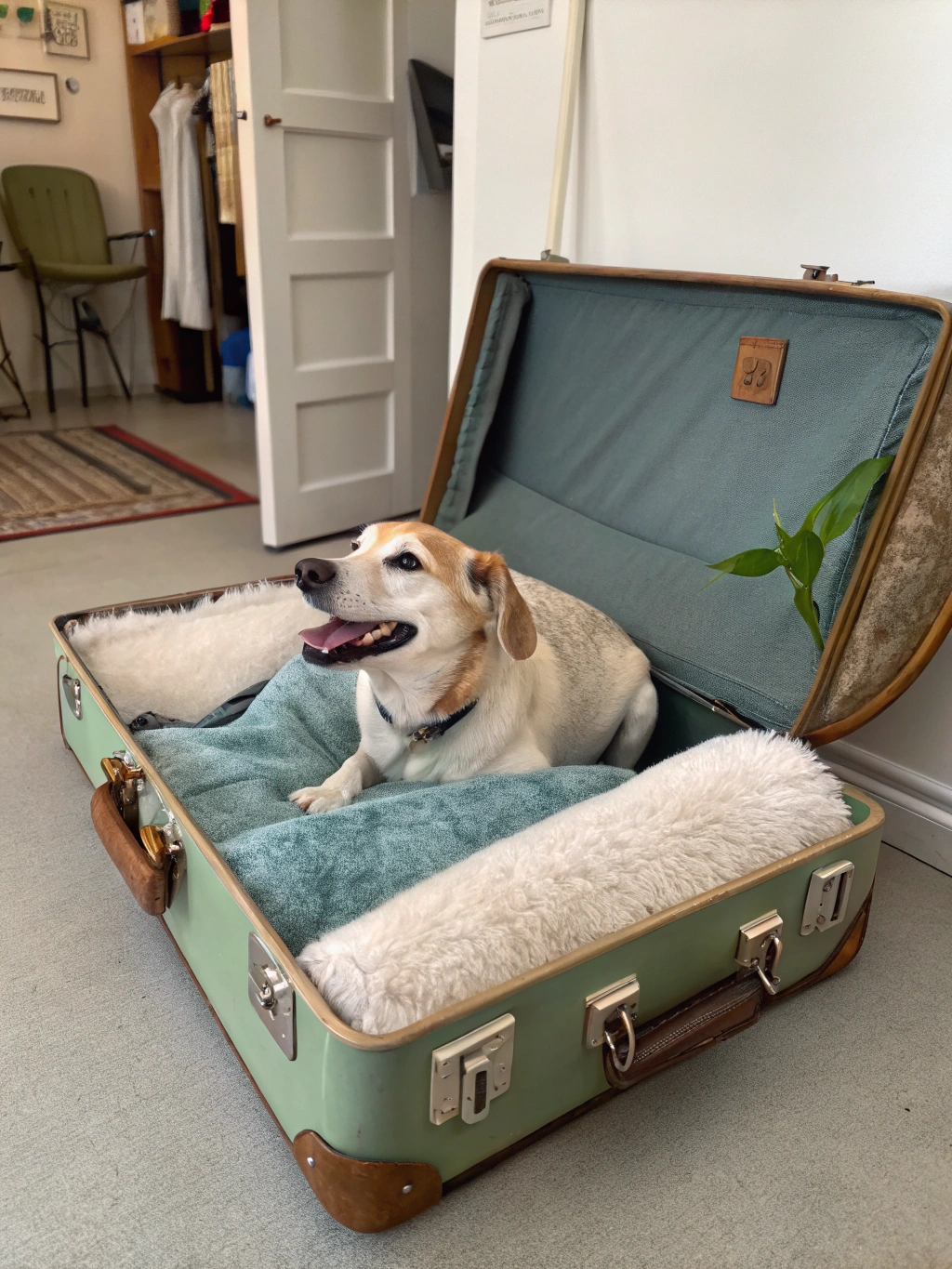
Old, hardshell suitcases have such charm and character. Instead of letting them languish in the attic, transform one into an effortlessly chic bed for your cat or small dog. This is one of the most popular “Creative upcycled pet beds ideas” for a reason!
What You’ll Need (Specific):
- Vintage Hardshell Suitcase: The sturdier, the better.
- Furniture Legs (optional): Screw-on or bolt-on types.
- Plywood or Masonite (optional): To reinforce the base if needed.
- Cushion: Custom-made or a store-bought one that fits.
Step-by-Step Transformation:
- Prepare the Suitcase: Open the suitcase and decide if you’ll use one half or both. For a single-sided bed, you might need to detach the lid (some hinges easily come apart). Clean it thoroughly inside and out. A mild soap and water solution works well. If there are any lingering musty smells, airing it out in the sun or using a baking soda paste can help.
- Add Stability (Optional): If the suitcase half seems a bit flimsy, you can reinforce the bottom. Cut a piece of thin plywood or Masonite to fit snugly inside. Glue or screw it into place. This provides a solid base, especially if you’re adding legs.
- Attach Legs (Optional): For a more elevated look, attach furniture legs. You can find these at hardware stores or salvage them from old furniture. Mark your spots, drill pilot holes, and securely screw or bolt the legs to the bottom of the suitcase. Ensure they are evenly placed for stability.
- Create the Comfy Core: Measure the interior of your suitcase bed. Sew a custom cushion using your chosen fabric and filling, or find a plush pillow that fits. You could even repurpose an old baby quilt for a truly unique touch, much like how you might repurpose baby clothes quilt pieces for other projects.
- Finishing Touches: Line the sides with fabric if you wish. You can leave the suitcase exterior as is for a vintage vibe or paint it with pet-safe paint to match your decor.
This vintage suitcase upcycled pet bed not only provides a cozy spot for your pet but also serves as a unique conversation piece in your home.
Idea 2: The Old Drawer Dream Den (Detailed Guide) Upcycled Pet Beds
Do you have an old dresser that’s seen better days, or perhaps a spare drawer from a past project? Don’t toss it! An old drawer can be easily converted into a snug and stylish bed, perfect for cats or small to medium-sized dogs. This is a classic “Upcycled pet beds DIY, Creative upcycled pet beds ideas, How to make upcycled pet beds” project that’s both simple and satisfying.
What You’ll Need (Specific):
- An Old Wooden Drawer: Ensure it’s sturdy and free of splinters.
- Sandpaper (medium and fine grit).
- Pet-Safe Paint or Stain (optional).
- Furniture Knobs or Small Bun Feet (optional, for elevation).
- Fabric for cushion and liner.
- Cushion Filling (foam, old pillows, etc.).
Step-by-Step Guide: From Drab Drawer to Fab Upcycled Pet Bed
Step 1: Clean and Prep the Drawer
First things first, thoroughly clean the drawer inside and out. Remove any existing hardware like handles or knobs unless you plan to incorporate them into the new design. Use a good wood cleaner or a simple soap and water solution. Once dry, it’s time to sand. Start with medium-grit sandpaper to smooth out any rough patches, splinters, or old finish. Follow up with fine-grit sandpaper for a silky-smooth surface, especially on any edges your pet might rub against. This step is crucial for safety and for ensuring any paint or stain adheres properly. Don’t skip it! A common pitfall here is not sanding enough, leading to a rough finish or poor paint adhesion.
Why it matters: Proper cleaning and sanding not only make the drawer look better but also remove any potential hazards for your pet. A smooth surface is also key for a professional-looking paint job.
Step 2: Paint or Stain (Optional)
Now for the fun part – giving your drawer a new look! If you choose to paint or stain, ensure you’re using pet-safe, non-toxic products. Low VOC or No VOC paints are ideal. Apply a primer if you’re painting a light color over dark wood or if the wood is particularly porous. This will help the paint adhere better and give you a more even color. Apply one or two coats of your chosen paint or stain, allowing ample drying time between coats according to the manufacturer’s instructions. Consider a color that complements your home decor or your pet’s personality!
Why it matters: Beyond aesthetics, a good coat of paint or sealant can protect the wood and make the bed easier to clean. The “pet-safe” aspect is paramount to prevent any accidental ingestion of harmful chemicals. A common mistake is rushing the drying time, which can lead to a tacky finish.
Step 3: Add Feet (Optional)
Adding small feet or even repurposing old furniture knobs can elevate the drawer slightly, giving it a more “bed-like” appearance and allowing for airflow underneath. This can also prevent the bottom of the drawer from scratching your floors. Simply screw them into the four corners of the drawer’s underside. Ensure they are sturdy and can support the weight of your pet.
Why it matters: Elevation can make the bed look more finished and can be practical for cleaning underneath. Ensure the feet are securely attached; wobbly legs are a no-go.
Step 4: Create a Comfy Cushion
This is where you make the bed truly inviting. Measure the inside dimensions of the drawer. You can either cut a piece of foam to size or use an old pillow or layers of soft fabric as filling. Create a removable, washable cover for the cushion. This is super important for hygiene! Choose a durable yet soft fabric. Sew a simple pillowcase-style cover or a more fitted, zippered one.
Why it matters: Comfort is key for your pet, and a washable cover is essential for keeping the bed clean and fresh. A common pitfall is making the cushion too bulky, leaving little room for the pet, or too thin, offering insufficient padding. Aim for a Goldilocks cushion – just right!
Step 5: Assemble and Introduce
Place the finished cushion into the drawer. You might also want to line the inner sides of the drawer with a soft fabric for extra coziness, attaching it with pet-safe glue or small tacks. Once complete, introduce your pet to their new upcycled pet bed! You can entice them with their favorite toy or a treat.
Why it matters: The final assembly brings it all together. Gentle introduction helps your pet associate their new bed with positive experiences.
Idea 3: The Tire Transformation Tuffet Upcycled Pet Beds
Old tires are an environmental nuisance, but they can be surprisingly versatile for DIY projects. With a bit of cleaning and creativity, a sturdy tire can become an incredibly durable and unique bed, especially for dogs who like to curl up.
What You’ll Need (Specific):
- Old Car or Tractor Tire: Ensure it’s thoroughly cleaned.
- Heavy-Duty Cleaner/Degreaser.
- Strong Rope (e.g., sisal, jute, or thick cotton) or Exterior Paint.
- Circular Piece of Plywood: Cut to fit snugly inside the tire’s bottom opening.
- Cushion.
Step-by-Step Transformation:
- Clean the Tire (Seriously!): This is the most crucial step. Tires can be grimy. Use a heavy-duty cleaner and degreaser, scrub well, and rinse thoroughly. Let it dry completely. You might need to do this a couple of times.
- Prepare the Base: Measure the inner diameter of the tire’s bottom opening. Cut a circular piece of plywood to this size. This will form the base of the bed and support the cushion.
- Wrap or Paint: To cover the black rubber, you can either paint the tire with durable, pet-safe exterior paint (several coats might be needed) or wrap it tightly with thick rope. If wrapping, start at the bottom and work your way up, securing the rope with strong adhesive (like construction adhesive) as you go. This method gives a lovely rustic or nautical look.
- Insert Base and Cushion: Place the plywood circle inside the tire, resting it on the bottom sidewall. Then, add a round cushion. You can buy one or make a custom one.
This tire upcycled pet bed is robust and great for indoor or covered outdoor use.
Idea 4: The Cozy Sweater Sanctuary Upcycled Pet Beds
Have an old, chunky knit sweater that’s shrunk, stained, or just out of style? Don’t throw it away! It can be transformed into the softest, coziest little nest for your cat or small dog. This is one of the quickest “Upcycled pet beds DIY, Creative upcycled pet beds ideas, How to make upcycled pet beds” and requires minimal tools.
What You’ll Need (Specific):
- Old Sweater: Wool or chunky knit sweaters work best.
- Pillow or Cushion Filling: Old pillows, fabric scraps, or fiberfill.
- Needle and Thread (or a sewing machine).
- Scissors.
Step-by-Step Transformation:
- Prepare the Sweater: Lay the sweater flat.
- Sew the Neckline: Stitch the neckline closed by hand or with a sewing machine. This will prevent the filling from escaping.
- Stuff the Body and Sleeves: Turn the sweater inside out. Stuff the body section and the sleeves of the sweater with your chosen filling until it’s plump and comfy. Distribute the filling evenly.
- Shape and Sew: Arrange the stuffed sleeves around the stuffed body to form a circular or oval bolster/edge. Pin them in place. Carefully hand-stitch the sleeves to the body of the sweater, creating a defined bed shape. You’re essentially making a donut shape with the sleeves forming the outer ring and the body forming the central cushion.
- Final Fluff: Turn it right-side out (if you sewed it inside out for neater seams). Fluff it up, and it’s ready for your pet to snuggle into their new, soft upcycled pet bed.
This project is fantastic because it’s so soft, and your scent on the old sweater might even make it extra comforting for your pet.
Idea 5: The Pallet Paradise Pad
Wooden pallets are often available for free from local businesses or construction sites (always ask permission before taking!). They provide a rustic, sturdy base for a larger dog bed.
What You’ll Need (Specific):
- Wooden Pallet: Choose one in good condition, preferably heat-treated (HT stamp) rather than chemically treated.
- Saw (handsaw, circular saw, or jigsaw).
- Heavy-Duty Sandpaper or Power Sander.
- Screws or Nails.
- Pet-Safe Wood Stain or Paint (optional).
- Large Cushion or Dog Mattress.
Step-by-Step Transformation:
- Dismantle/Cut the Pallet (if needed): Depending on the size you want, you might use a whole small pallet or cut a larger one down. You can also dismantle pallets carefully to use the individual planks to build a custom-sized frame. Be very careful of nails when dismantling.
- Sand Thoroughly: Pallet wood can be rough and prone to splinters. This step is VITAL. Sand all surfaces and edges meticulously until smooth. A power sander will make this job much easier.
- Assemble the Bed Frame: If you’ve cut the pallet or are using loose planks, assemble a simple rectangular frame. You might add short legs or leave it flat on the floor. Use sturdy screws or nails.
- Stain or Paint (Optional): Apply a pet-safe wood stain or paint for a more finished look and added protection for the wood.
- Add the Cushion: Place a large, comfortable dog mattress or a custom-made cushion inside the pallet frame. You can find large foam pieces at craft stores or repurpose an old crib mattress (ensure it’s clean and safe).
A pallet upcycled pet bed offers a durable, industrial-chic vibe and can be sized for even the largest breeds.
Idea 6: The Wine Crate Cozy Corner
Wooden wine crates are sturdy, often have charming vineyard markings, and are a great size for cats or very small dogs. You can often find them at liquor stores or wineries.
What You’ll Need (Specific):
- Wooden Wine Crate.
- Sandpaper.
- Soft Fabric for Lining.
- Small Cushion or Pillow.
- Pet-Safe Glue (optional, for lining).
- Small Bun Feet (optional).
Step-by-Step Transformation:
- Clean and Sand: Wipe down the wine crate. Lightly sand any rough edges or potential splinters, being careful not to remove too much of the printed designs if you like them.
- Add Feet (Optional): Screw small bun feet onto the bottom corners for a little elevation and a more furniture-like appearance.
- Line the Crate (Optional): For extra comfort and a softer touch, you can line the inside of the crate with soft fabric like fleece or velvet. Cut fabric pieces to fit the bottom and sides, and secure them with pet-safe fabric glue or a few small, inconspicuous tacks.
- Insert Cushion: Place a small, plush cushion or pillow inside. You might need to make a custom one to fit perfectly.
This wine crate upcycled pet bed is quick to make and adds a touch of rustic elegance to any room.
Idea 7: The Picture Frame Perch (for small pets)
This is a more unusual idea, perfect for very small pets like kittens, toy breed puppies, or even a pampered guinea pig or rabbit! An ornate, deep-set old picture frame can become an adorable, regal-looking mini bed.
What You’ll Need (Specific):
- Old, Ornate Picture Frame (the deeper, the better).
- Thin Plywood or Sturdy Cardboard: For the base.
- Strong Glue or Small Tacks.
- Fabric for Cushion.
- Cushion Filling.
- Pet-Safe Paint (optional, for the frame).
Step-by-Step Transformation:
- Prepare the Frame: Remove any glass and backing from the picture frame. Clean it well. If you wish, you can paint the frame with pet-safe paint to refresh its look or change the color.
- Create a Base: Measure the inside recess of the frame. Cut a piece of thin plywood or several layers of very sturdy cardboard to fit snugly into this recess. This will be the bottom of the bed.
- Attach the Base: Securely glue or tack the plywood/cardboard base into the back of the frame, so it creates a shallow box.
- Make a Tiny Cushion: Create a small, plush cushion to fit perfectly inside the frame. Use soft, luxurious fabric to enhance the regal feel.
- Place and Pamper: Put the cushion in the frame, and you have an adorable, miniature upcycled pet bed fit for a tiny prince or princess!
This is a wonderful way to use an old frame that might otherwise be discarded and creates a truly unique and whimsical pet accessory. For other ideas on using old textiles, consider projects like creating a repurpose baby clothes quilt, which can also inspire fabric choices for your pet beds.
General Tips for Your Upcycled Pet Beds Masterpiece
No matter which creative path you choose, here are some universal tips to ensure your upcycled pet bed project is a roaring success:
- Measure Your Pet: Before you start, observe how your pet likes to sleep. Do they curl up, stretch out, or lean against things? Measure them while they’re sleeping in their favorite position to get an idea of the ideal bed size.
- Prioritize Pet Safety: This cannot be stressed enough.
- Avoid Small, Detachable Parts: Buttons, beads, or anything that could be chewed off and swallowed are a no-go.
- Use Non-Toxic Materials: Always choose pet-safe paints, glues, stains, and fabrics. Check labels carefully.
- Sand All Edges: Ensure there are no splinters, sharp edges, or protruding nails/screws.
- Think About Cleaning: Pets can be messy! Opt for designs that are easy to clean. Removable, machine-washable cushion covers are your best friend. Surfaces that can be wiped down are also a plus.
- Durability Matters: Consider your pet’s habits. If they’re a chewer or a digger, choose sturdy materials and construction methods. Reinforce weak points.
- Location, Location, Location: Think about where the bed will go. This might influence your design choices in terms of size, style, and materials.
- Introduce Gradually: Some pets take to new things instantly, while others are more cautious. Place the new bed in a familiar spot, and you can encourage them with treats, toys, or an old blanket that carries their scent. Don’t force it; let them explore it in their own time.
Final Result: A Cozy Haven and a Happy Pet!
Imagine the satisfaction of seeing your beloved furball curled up contentedly in a beautiful, comfortable bed that you made! That’s the true reward of embarking on an upcycled pet beds project.

Not only have you created something unique and stylish, but you’ve also contributed to a more sustainable lifestyle, saved money, and most importantly, provided a special sanctuary for your pet. These projects are a testament to how a little creativity and effort can transform everyday objects into something extraordinary.
We’d absolutely love to see your own upcycled pet bed creations! Share your photos and tips in the comments below, or tag us on social media. Let’s inspire each other!
Pro Tips & FAQs for Your Upcycled Pet Beds
Got more questions? We’ve got answers! Here are some frequently asked questions about making upcycled pet beds.
What are the best pet-safe paints and finishes for upcycled pet beds DIY projects?
Always look for paints and finishes labeled “non-toxic,” “pet-safe,” “No VOC” (Volatile Organic Compounds), or “Low VOC.” Water-based paints are generally a better option than oil-based ones. Milk paint, chalk paint (sealed with a non-toxic wax or sealer), and shellac (a natural resin) are often good choices. Always allow items to cure fully in a well-ventilated area for several days or weeks before letting your pet use them, even if the product is non-toxic. This ensures any residual off-gassing is complete.
How can I make my upcycled pet bed extra durable for a destructive dog?
For dogs known for their chewing or digging prowess, choose ultra-sturdy base materials like a heavy-duty tire or a well-built wooden crate/pallet structure. Reinforce all joints with screws and wood glue. When it comes to cushions, opt for heavy-duty, chew-resistant fabrics like canvas, Cordura, or thick denim. Double-stitching seams can also help. Avoid protruding parts or soft wooden edges that might invite chewing. Sometimes, no bed is truly “indestructible,” so supervision and providing appropriate chew toys are also key.
Are there any items I should AVOID using for creative upcycled pet beds ideas?
Yes, definitely. Avoid items treated with harsh chemicals, lead paint (common in very old furniture – test if unsure), or anything with lots of small, easily detachable parts. Flimsy plastics that can crack and create sharp edges are also a bad idea. Be cautious with items that might tip over easily if your pet jumps in or out. Always prioritize structural integrity and non-toxic materials. If you’re unsure about an item’s safety, it’s best to err on the side of caution and choose something else.
How do I get my pet to actually use the new upcycled pet bed?
Patience is key! Place the bed in an area where your pet already likes to relax. Make it inviting by placing their favorite blanket or toy on it. You can also use positive reinforcement: offer treats or praise when they investigate or use the bed. Ensure the bed is comfortable and suits their sleeping style (e.g., bolsters for leaners, open space for stretchers). Avoid forcing them into it, as this can create negative associations.
Where can I find inspiration for “How to make upcycled pet beds”?
Besides this guide, great places for inspiration include Pinterest, DIY blogs, and home improvement forums. Thrift stores and antique shops can also spark ideas – you might see an old item and immediately envision its potential as a pet bed! Websites like Sum of their Stories often feature creative reuse projects, which can provide a wealth of ideas for “Upcycled pet beds DIY, Creative upcycled pet beds ideas, How to make upcycled pet beds”.
Creating upcycled pet beds is more than just a DIY project; it’s an act of love for your pet and our planet. It’s about seeing potential where others see waste and crafting something truly special with your own two hands.
So, what are you waiting for? Look around your home, visit a thrift store, and let your imagination run wild. Your pet’s dream bed might just be an old drawer or a forgotten suitcase away!
We want to hear from you! Which of these ideas inspired you the most? Do you have other amazing upcycled pet bed creations to share? Drop a comment below, and let’s build a community of creative, pet-loving DIYers!
And if you found this guide helpful, please consider sharing it with your fellow DIY enthusiasts and pet parents. For more DIY tips, tricks, and tutorials, don’t forget to subscribe to our newsletter! Happy upcycling!

